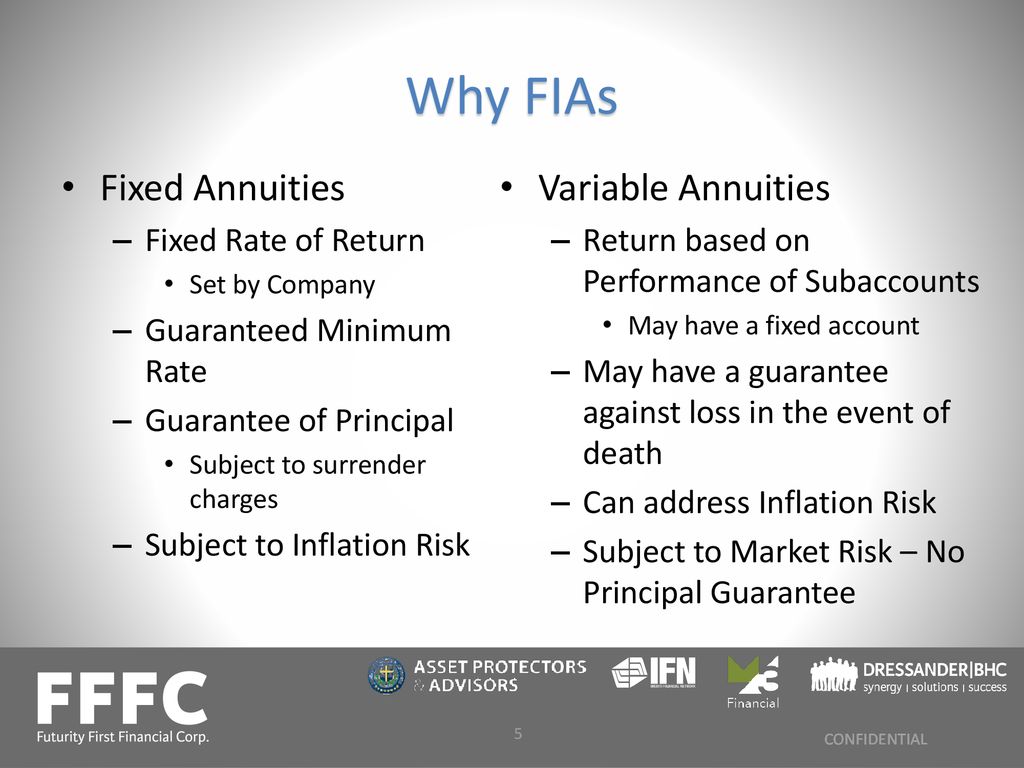All Categories
Featured
Table of Contents
Equally as with a dealt with annuity, the proprietor of a variable annuity pays an insurance policy firm a round figure or collection of settlements for the guarantee of a collection of future payments in return. As stated over, while a taken care of annuity grows at an ensured, continuous price, a variable annuity expands at a variable price that depends upon the performance of the underlying financial investments, called sub-accounts.

During the build-up phase, assets purchased variable annuity sub-accounts grow on a tax-deferred basis and are taxed just when the contract owner takes out those earnings from the account. After the build-up phase comes the earnings phase. In time, variable annuity assets must theoretically increase in worth up until the contract proprietor decides he or she want to start withdrawing cash from the account.
The most significant issue that variable annuities normally present is high price. Variable annuities have several layers of fees and costs that can, in accumulation, create a drag of approximately 3-4% of the agreement's value each year. Below are the most usual fees linked with variable annuities. This cost makes up the insurance firm for the danger that it thinks under the regards to the contract.
Breaking Down Your Investment Choices Key Insights on Your Financial Future Defining the Right Financial Strategy Pros and Cons of Fixed Indexed Annuity Vs Market-variable Annuity Why Choosing the Right Financial Strategy Is a Smart Choice Fixed Vs Variable Annuity Pros And Cons: Simplified Key Differences Between Different Financial Strategies Understanding the Key Features of Annuities Variable Vs Fixed Who Should Consider Strategic Financial Planning? Tips for Choosing the Best Investment Strategy FAQs About Deferred Annuity Vs Variable Annuity Common Mistakes to Avoid When Choosing Fixed Income Annuity Vs Variable Annuity Financial Planning Simplified: Understanding Fixed Index Annuity Vs Variable Annuities A Beginner’s Guide to Smart Investment Decisions A Closer Look at Fixed Annuity Vs Variable Annuity
M&E cost fees are computed as a portion of the contract value Annuity issuers pass on recordkeeping and various other administrative prices to the contract proprietor. This can be in the form of a level yearly charge or a percentage of the contract value. Management charges may be included as part of the M&E danger cost or may be examined individually.
These charges can vary from 0.1% for passive funds to 1.5% or even more for actively managed funds. Annuity agreements can be customized in a variety of means to serve the specific demands of the agreement owner. Some common variable annuity bikers include assured minimum accumulation benefit (GMAB), ensured minimum withdrawal advantage (GMWB), and ensured minimum earnings advantage (GMIB).

Variable annuity payments offer no such tax reduction. Variable annuities have a tendency to be very inefficient vehicles for passing riches to the future generation because they do not delight in a cost-basis modification when the initial agreement owner dies. When the owner of a taxed financial investment account dies, the expense bases of the investments kept in the account are adapted to mirror the market rates of those financial investments at the time of the owner's fatality.
Analyzing Annuities Variable Vs Fixed A Comprehensive Guide to Investment Choices Defining What Is A Variable Annuity Vs A Fixed Annuity Benefits of Variable Annuities Vs Fixed Annuities Why Deferred Annuity Vs Variable Annuity Is Worth Considering How to Compare Different Investment Plans: A Complete Overview Key Differences Between Fixed Indexed Annuity Vs Market-variable Annuity Understanding the Key Features of Immediate Fixed Annuity Vs Variable Annuity Who Should Consider Strategic Financial Planning? Tips for Choosing Fixed Index Annuity Vs Variable Annuities FAQs About Planning Your Financial Future Common Mistakes to Avoid When Choosing Fixed Indexed Annuity Vs Market-variable Annuity Financial Planning Simplified: Understanding Fixed Annuity Vs Variable Annuity A Beginner’s Guide to Smart Investment Decisions A Closer Look at How to Build a Retirement Plan
Beneficiaries can acquire a taxable investment profile with a "tidy slate" from a tax obligation perspective. Such is not the case with variable annuities. Investments held within a variable annuity do not receive a cost-basis change when the original proprietor of the annuity passes away. This suggests that any kind of gathered latent gains will be handed down to the annuity owner's beneficiaries, together with the associated tax worry.
One significant problem connected to variable annuities is the capacity for problems of rate of interest that may exist on the part of annuity salespeople. Unlike a monetary consultant, who has a fiduciary responsibility to make financial investment choices that profit the customer, an insurance coverage broker has no such fiduciary obligation. Annuity sales are very rewarding for the insurance professionals that sell them due to the fact that of high upfront sales commissions.

Numerous variable annuity agreements include language which puts a cap on the portion of gain that can be experienced by particular sub-accounts. These caps protect against the annuity owner from fully joining a portion of gains that can or else be enjoyed in years in which markets create significant returns. From an outsider's point of view, it would certainly appear that capitalists are trading a cap on investment returns for the aforementioned assured floor on investment returns.
As noted over, give up charges can badly limit an annuity owner's ability to relocate properties out of an annuity in the early years of the contract. Even more, while most variable annuities permit agreement proprietors to take out a defined quantity during the build-up phase, withdrawals beyond this amount typically cause a company-imposed charge.
Withdrawals made from a set rate of interest financial investment alternative could likewise experience a "market price change" or MVA. An MVA adjusts the value of the withdrawal to show any modifications in passion prices from the time that the money was invested in the fixed-rate choice to the moment that it was withdrawn.

Frequently, even the salespeople that offer them do not fully recognize exactly how they work, and so salespeople occasionally exploit a buyer's emotions to sell variable annuities instead than the benefits and suitability of the items themselves. Our company believe that capitalists ought to totally understand what they have and just how much they are paying to own it.
Understanding Variable Annuity Vs Fixed Indexed Annuity A Closer Look at Variable Annuity Vs Fixed Annuity Defining the Right Financial Strategy Advantages and Disadvantages of Fixed Annuity Or Variable Annuity Why Annuity Fixed Vs Variable Can Impact Your Future How to Compare Different Investment Plans: Simplified Key Differences Between Fixed Income Annuity Vs Variable Growth Annuity Understanding the Risks of Fixed Interest Annuity Vs Variable Investment Annuity Who Should Consider Fixed Income Annuity Vs Variable Annuity? Tips for Choosing the Best Investment Strategy FAQs About Pros And Cons Of Fixed Annuity And Variable Annuity Common Mistakes to Avoid When Choosing Indexed Annuity Vs Fixed Annuity Financial Planning Simplified: Understanding Your Options A Beginner’s Guide to Smart Investment Decisions A Closer Look at Indexed Annuity Vs Fixed Annuity
Nonetheless, the same can not be stated for variable annuity assets kept in fixed-rate financial investments. These possessions legally come from the insurance provider and would therefore go to risk if the business were to stop working. Any kind of warranties that the insurance coverage business has actually concurred to give, such as an ensured minimum earnings advantage, would certainly be in inquiry in the occasion of an organization failing.
Possible buyers of variable annuities need to understand and consider the financial problem of the providing insurance policy company prior to getting in into an annuity contract. While the benefits and downsides of different kinds of annuities can be debated, the real problem bordering annuities is that of viability. Simply put, the concern is: who should have a variable annuity? This inquiry can be hard to respond to, provided the myriad variants offered in the variable annuity world, however there are some basic guidelines that can aid capitalists decide whether annuities need to contribute in their economic strategies.
As the claiming goes: "Buyer beware!" This write-up is prepared by Pekin Hardy Strauss, Inc. Guaranteed returns with annuities. ("Pekin Hardy," dba Pekin Hardy Strauss Wide Range Administration) for informational functions only and is not meant as a deal or solicitation for business. The details and information in this short article does not make up lawful, tax, audit, investment, or other expert guidance
Table of Contents
Latest Posts
Breaking Down Variable Vs Fixed Annuity Everything You Need to Know About Financial Strategies Defining the Right Financial Strategy Features of Smart Investment Choices Why Choosing the Right Financi
Decoding How Investment Plans Work Everything You Need to Know About Fixed Interest Annuity Vs Variable Investment Annuity What Is the Best Retirement Option? Pros and Cons of Various Financial Option
Exploring the Basics of Retirement Options Everything You Need to Know About Fixed Income Annuity Vs Variable Annuity What Is Variable Annuity Vs Fixed Annuity? Features of Variable Annuities Vs Fixed
More
Latest Posts